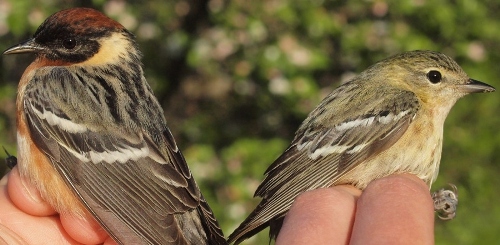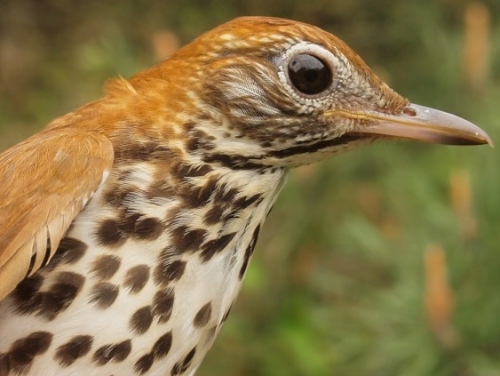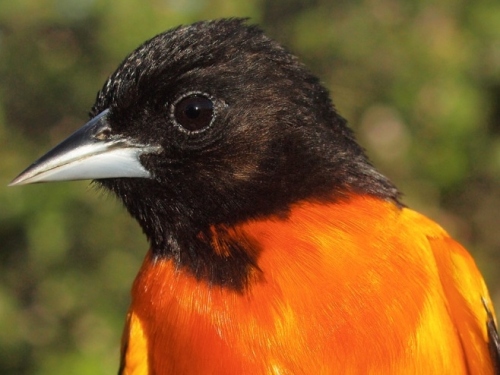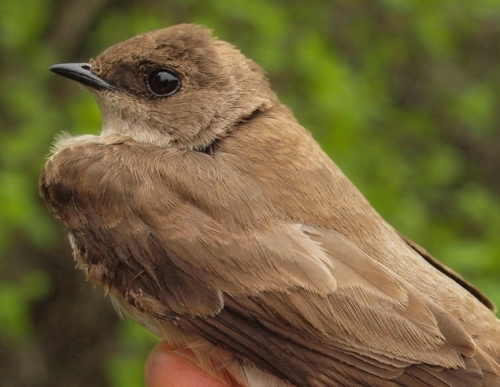|
|
THIS WEEK |
THIS SPRING |
2014 TOTAL |
SITE TOTAL |
|
# birds (and species) banded |
209 (41) |
964 (55) |
964 (55) |
47274 (114) |
# birds (and species) repeat |
75 (18) |
198 (29) |
198 (29) |
9332 (70) |
|
# birds (and species) return |
19 (11) |
104 (21) |
104 (21) |
1538 (38) |
|
# species observed |
107 |
135 |
136 |
209 |
|
# net hours |
499.0 |
2277.4 |
2277.4 |
81460.7 |
|
# birds banded / 100 net hours |
41.9 |
42.3 |
42.3 |
58.0 |
|
|
Note: table does not include nocturnal banding (owls) |
Banders-in-charge: Simon Duval, Gay Gruner
Assistants: Nicolas Bernier, Sue Bishop, Cindy Bouchard, Marie-France Boudreault, Luke Currin, Mark Currin, David Davey, Geneviève Dubois, Barbara Frei, Alison Hackney, Lisa Keelty, Helen Kohler, Marcel Lebeau, Ana Morales, Catherine Russell, Ahmad Shah, Elise Titman, Rodger Titman, Christiane Tremblay, Allan Wongkee, Linda Wongkee
Notes: Although the number of birds banded this week tapered off considerably from last week, it was still considerably above average for this time of year, and the season total is already approaching 1000 – noteworthy as the highest previous sum for an entire spring season is 994, a record that is sure to fall next week. The number of species banded is also on record pace – in fact, only three times previously have we banded more than 65 species in an entire spring season, and we may well yet add to this total over the final two weeks ahead. Even more impressively, the 107 species observed this week is a new weekly record for MBO in any season.

A rare opportunity to compare male and female Bay-breasted Warblers with these two banded on the same morning. Only 8 others have previously been banded over 9 entire spring seasons.
(Photo by Simon Duval)
|
The nine species banded for the first time this week include five of the warblers that we missed last week although they had arrived on site (Mourning, Cape May, Bay-breasted, Black-throated Green, and Canada). In addition, we banded our third ever Northern Rough-winged Swallow (and first since 2007), plus our first Traill’s Flycatcher, Veery, and Wood Thrush of 2014. The increase in new species observed for the season slowed somewhat after last week’s record influx, but we still added another ten. A trio of uncommon ducks for MBO (American Wigeon, Gadwall, and Greater Scaup) were among this week’s arrivals, as were two flycatchers (Willow and Yellow-bellied), two swallows (Northern Rough-winged and Purple Martin), plus Sora and Chimney Swift. Rounding out the list of newcomers was another species we observe less than annually – Clay-colored Sparrow.
This week’s
top 10 [last week's top 10 in brackets]
#
individuals banded |
mean # individuals observed daily |
1. Magnolia Warbler (39) [4] |
1. Ring-billed Gull (55) [2] |
2. Tennessee Warbler (25) [-] |
2. Red-winged Blackbird (44) [3] |
3. Yellow Warbler (16) [8] |
3. Yellow Warbler (15) [8] |
4. Northern Waterthrush (15) [6] |
4. Song Sparrow (13) [6] |
4. American Goldfinch (15) [2] |
5. Tennessee Warbler (13) [-] |
6. Common Yellowthroat (12) [6] |
6. Baltimore Oriole (12) [-] |
7. Yellow-rumped Warbler (8) [1] |
7. Common Yellowthroat (12) [-] |
| 7. Red-winged Blackbird (8) [5] |
8. American Goldfinch (11) [7] |
| 9. Wilson's Warbler (7) [-] |
9. American Crow (11) [-] |
10. Gray Catbird (6) [-]
10. Baltimore Oriole (6) [10]
|
10. Magnolia Warbler (10) [-]
|
|
Warblers typically dominate the list of species banded in week 8 of spring – since 2009, the top ten has included at least six warbler species each year, and in 2014 the count came in at seven. For the second year in a row (and third time overall, including 2009), the four top species were all warblers. In a rare (perhaps even unprecedented) feat, the top four species this week are identical to the top four from this period last year! Also noteworthy, despite dominating week 8 in 2013 and 2014, Magnolia Warbler had never previously been in top place at this point in spring, and in fact from 2005 through 2009, the count of Magnolia Warblers banded during this period never exceeded 10. The number of Tennessee Warblers was actually down a bit from 2012 (42) and 2013 (38), but still above the long-term average of 18. Yellow Warbler and Northern Waterthrush numbers were also higher than average. Rounding out the top five, American Goldfinch numbers dropped a bit from week 7, but the season total is still on pace to be the best for spring since 2005. Of note among the remaining species in the top ten, the six Baltimore Orioles in combination with last week’s 11 brings the season total to the highest for spring since 2007.
After last week getting close to top spot among birds observed, Ring-billed Gull finally obtained that ranking this week. It is relatively common for Ring-billed Gull to dominate at this point in May, having also done so in 2005, 2009, 2010, and 2013. Red-winged Blackbird was in second place this week, as in all those previous years (and in the other five years, it was the leading species for week 8). All other species this week were considerably less abundant than the top two, allowing Yellow Warbler to sneak into the top three for just the second time (the other occasion being in 2008 … it seems like every week this spring there is at least one distinct parallel with that year). For the first time ever, more than two warblers cracked the top ten in species observed for week 8. Tennessee Warbler was previously in the top ten in 2009 and 2012, but this is the first time that either Magnolia Warbler of Common Yellowthroat have been sufficiently common to appear on the list. Reflecting the good number of Baltimore Orioles banded, the mean daily count of 11 was well above the ten-year mean for this period (only the 15 per day observed in 2013 was higher).
|

This was only the third Wood Thrush banded at MBO over our 10 spring seasons.
(Photo by Simon Duval)

One of the stunning male Baltimore Orioles banded this week
.
(Photo by Simon Duval)
|




